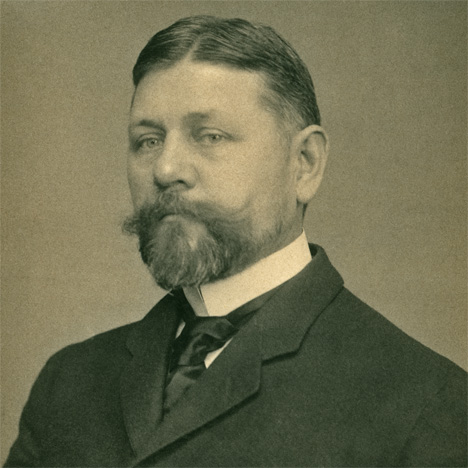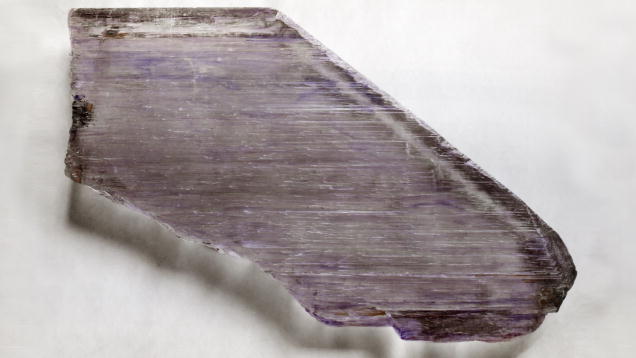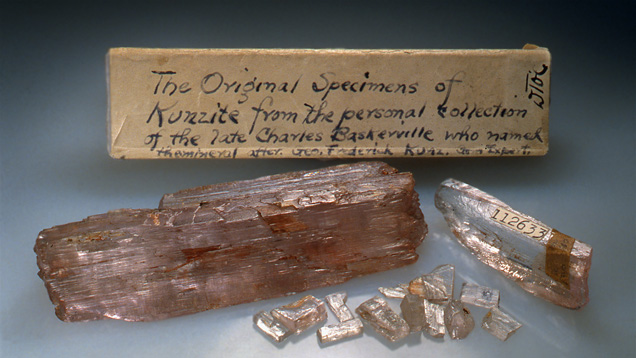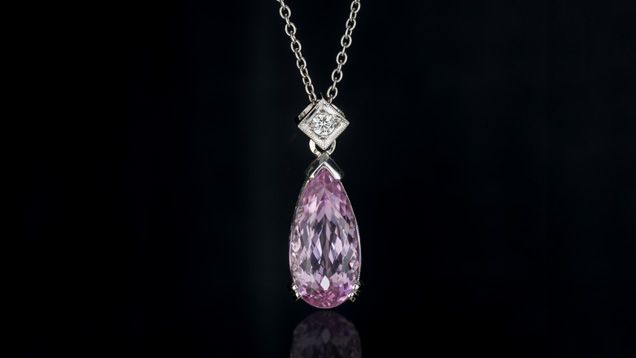Kunzite History and Lore


This photograph of a kunzite crystal was taken by George F. Kunz, the pioneering gemologist the gem is named after. - Courtesy USGS
Charles Baskerville, a chemistry professor at the University of North Carolina and later the City College of New York, subsequently named kunzite in honor of George Kunz in 1903.
This photograph shows Charles Baskerville’s historic collection of kunzite crystals. - Wendell Wilson
In the years since, kunzite has proven to be a highly desirable gem. Occurring in attractive shades of pink to violet, kunzite crystals are also often large, with relatively few inclusions. Though difficult to cut due to its two cleavage directions, it lends itself to lovely finished gems that show magnificently in fine jewelry.
This lovely pendant features a pear-shaped kunzite with a diamond accent. - Robert Weldon, courtesy The Greenwood Group



